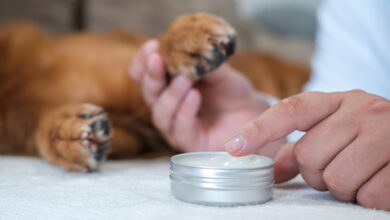I Thought It Was Just A Skin Tag… Until The Vet Told Me This
When you purchase through links on our site, we may earn a commission. Here’s how it works.
You know that strange lump you spotted on your dog’s lip last week? The one you hoped was just a bug bite? It might not be so innocent.
Table of Contents
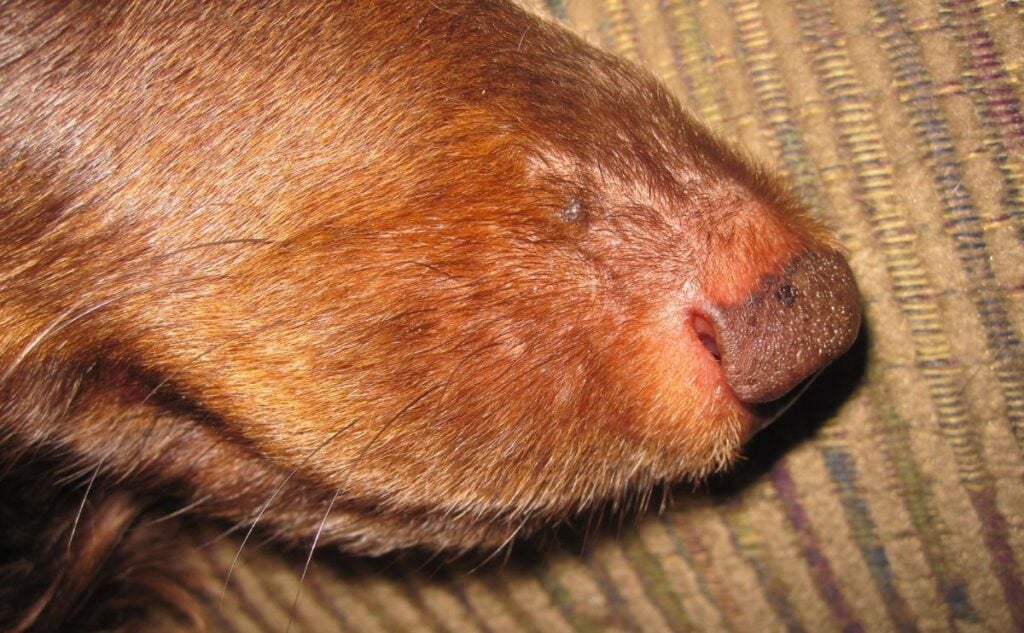
Malignant melanoma is one of the most aggressive and deceptive forms of skin cancer in dogs. It can look like a harmless bump, but it spreads like wildfire beneath the surface. If caught early, treatment is possible. If not, the consequences can be heartbreaking.
What Causes Melanoma In Dogs?
Unlike in humans, melanoma in dogs isn’t typically caused by sun exposure. Instead, genetics play a dominant role. Breeds such as Scottish Terriers, Schnauzers, Poodles, and Chow Chows show a higher predisposition. Research suggests chronic inflammation, trauma, or immune dysfunction may also trigger tumor development.
Types Of Canine Melanoma
Melanoma in dogs can occur in several forms, each with different behavior and risk levels.
Cutaneous (Skin) Melanoma
Cutaneous melanomas are the most visible—and often the least dangerous—type of melanoma in dogs. These tumors typically appear as dark, raised, and firm masses on the skin, most often found on the trunk, legs, or face. While many of these tumors are benign, they still require veterinary evaluation to rule out malignancy.
Despite their generally favorable prognosis, benign melanomas can still cause issues if they become ulcerated, bleed, or are located where they’re frequently irritated. Your vet may recommend surgical removal to prevent future complications or rule out deeper malignancy, especially if the lump is growing or changing.
Oral Melanoma
Oral melanomas are the most aggressive and deadly form of this cancer. These tumors develop in the gums, lips, tongue, or roof of the mouth, often going unnoticed until they reach an advanced stage. Because of their location, they can be hard to detect—many owners don’t discover them until their dog starts drooling excessively, dropping food, or developing terrible breath.
These tumors tend to invade the underlying bone quickly and have a high risk of spreading to lymph nodes and lungs. Treatment typically involves surgery, radiation, and immunotherapy; early diagnosis is crucial to extend your dog’s life. A monthly oral check can make all the difference while brushing your dog’s teeth or during grooming.
Ocular Melanoma
Melanoma can also develop in the eye (intraocular) or on the eyelid, though these cases are far less common. A form of eye cancer, intraocular melanomas often present as a dark spot or swelling in the iris (the colored part of the eye). Dogs may not initially show obvious pain, but signs like cloudiness, vision changes, excessive tearing, or squinting may eventually appear.>
Eyelid melanomas may resemble small, pigmented lumps and are often mistaken for benign growths. While some ocular melanomas remain localized, others can compromise vision or even rupture the eye. Surgical intervention is often recommended; in some cases, enucleation (eye removal) is necessary to stop the spread and relieve pain.
Subungual (Nail Bed) Melanoma
Subungual melanoma is one of the most commonly misdiagnosed forms of this cancer. It often starts with symptoms that resemble an infected or injured nail—swelling, bleeding, a loose nail, or lameness. Owners may think their dog stubbed a toe or has an ingrown nail when, in reality, the cancer is spreading beneath the surface.
Because of its aggressive nature and hidden location, this form of melanoma frequently invades bone tissue and spreads to the lungs before it’s detected. Vets may recommend toe amputation followed by imaging and immunotherapy, especially if the tumor has reached the digit’s base. Early intervention drastically improves outcomes, so don’t ignore a limping dog or persistent toe inflammation.
Signs & Symptoms To Watch For
Melanoma can present in subtle or aggressive ways. Here’s what to look out for:
- Black or brown skin lumps
- Facial swelling, drooling, or bleeding from the mouth
- Bad breath that doesn’t go away
- Nail discoloration, swelling, or lameness
- Masses in or around the eye
- Rapid changes in size, color, or behavior of a lump
Any of these signs—especially if they appear suddenly—warrant immediate veterinary attention.
How To Talk To Your Vet About Melanoma
If you’ve spotted a suspicious lump—or if your dog’s behavior is suddenly off—it’s completely normal to feel anxious walking into the vet’s office. But the more information you bring, the better your vet can help you.
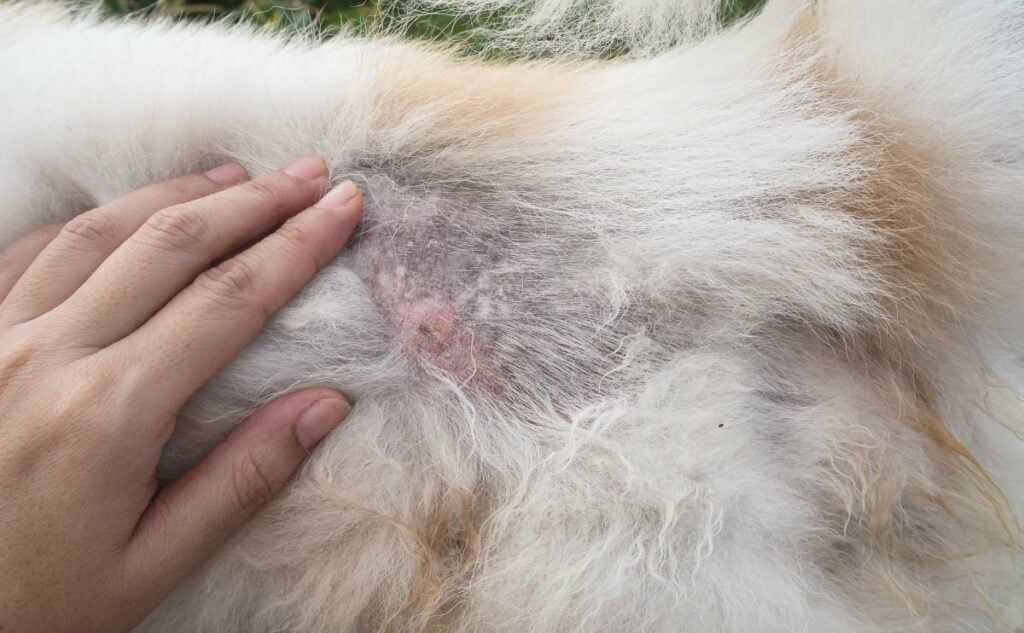
What To Document Before Your Visit
- When did you first notice the lump? Has it grown, changed shape, or started to bleed?
- What symptoms have you noticed? Is your dog limping, avoiding food, or licking the area?
- Do you have photos or videos? Visual history can help track progression.
- Does your dog have a history of growths or tumors? Prior conditions matter.
This isn’t just about saving time—it helps your vet make faster, more informed decisions.
Smart Questions To Ask Your Vet
- Could this be melanoma or something benign?
- What diagnostic steps should we take right now?
- If it’s malignant, what are our treatment options—and what’s the timeline?
- Should we screen for metastasis (spread of cancer cells)?
- Is immunotherapy right for this case?
Don’t be afraid to take notes or ask for a written summary. You’re your dog’s advocate—asking the right questions could buy them time.
How Does Melanoma Spread In Dogs?
Malignant melanomas are notorious for spreading fast. Even small tumors can metastasize before obvious symptoms appear. The most common metastatic sites include:
- Brain or spinal cord
- Liver
- Lungs
- Lymph nodes
Early detection is critical, not just for removal but to prevent widespread cancer.
Diagnosis & Treatment Options
Diagnosis typically involves a biopsy to confirm the tumor type. Your vet may also recommend:
- Chest X-rays to screen the lungs
- CT scan for surgical planning or advanced cases
- Fine needle aspirate of nearby lymph nodes
- Ultrasound for abdominal organs
Once melanoma is confirmed, the following treatments are common:
- Surgical removal: First-line option to remove the tumor and obtain clear margins
- Radiation therapy: Often used when surgery isn’t possible or as a follow-up to target remaining cancer cells
- Immunotherapy: Used to stimulate your dog’s immune system to fight tumor cells.
- Chemotherapy: Used less frequently for melanoma but may help in certain metastatic or advanced cases.
What to Expect During Treatment
Melanoma treatment isn’t a one-and-done process—it often unfolds in phases. Here’s a breakdown of the typical timeline:
1. Surgical Recovery (1–2 weeks):
- Restricted activity
- Pain medications and antibiotics
- Wound monitoring
2. Radiation Therapy (3–4 weeks):
- 2–5 sessions per week
- Mild fatigue or skin irritation
3. Immunotherapy (ongoing):
- Injection every 2–4 weeks
- Often combined with other treatments
- Fewer side effects than chemo
4. Long-Term Monitoring:
- Imaging every 3–6 months
- Lymph node palpation
- Routine bloodwork and chest X-rays
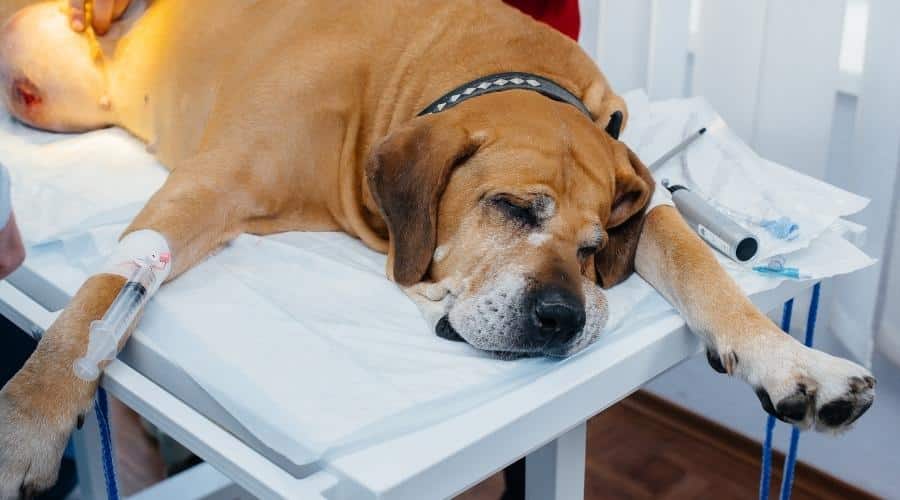
Prognosis: What You Should Expect
- Benign skin tumors: Excellent prognosis post-removal.
- Malignant oral or nail-bed melanomas: Survival without treatment averages 4–6 months. With surgery and immunotherapy, survival may extend to 12–18 months or longer.
- Newer treatments are significantly improving life expectancy and quality of life in early-detected cases.
How to Monitor Your Dog At Home
Even after treatment—or just as part of regular health checks—home monitoring is vital to prevention.
Monthly Home Check Tips
- Gently examine your dog’s mouth, lips, and under the tongue
- Check between the toes and around the nail beds
- Run your hands along the torso, limbs, and underarms
- Look for color changes, new lumps, bleeding, or foul odors
Pro Tip: Take a photo of any lump you’re watching. Compare it monthly for changes in size, shape, or color.
How Pet Insurance Can Help With Cancer Treatment Costs
Cancer treatment for dogs can quickly become a financial strain. Below is a breakdown of typical expenses. You can find a detailed list of costs for cancer treatments in our article covering vet visit rates.
| Service | Estimated Cost |
|---|---|
| Biopsy & Imaging | $300–$800 |
| Surgery | $500–$2,000 |
| Radiation Therapy | $2,000–$6,000 |
| Immunotherapy | $500–$1,000 per dose |

Pet insurance can drastically reduce out-of-pocket expenses—but only if the condition is not pre-existing. Most comprehensive pet insurance plans cover previously undiagnosed cancer treatments, including diagnostics, surgery, medications, and even radiation or chemotherapy.
What to look for in a policy:
- No cancer exclusions
- Coverage for diagnostics, surgery, and radiation
- Low deductibles and short waiting periods
- Lifetime max benefit over $10,000
- Coverage for follow-up care and specialty hospitals
If your dog is young or still healthy, now is the time to sign up. Delaying could mean coverage denial when you need it most.
What’s the best pet insurance for your dog? View our picks for the best pet insurance companies, including pros, cons, and personal experience from our team.
Which Breeds Are At A Higher Risk?
Melanoma can affect any dog, but is more common in:
- Dogs over 9 years old
- Black-coated dogs (more toe melanomas)
- Small to medium breeds
Breeds with known risk include:
- Airedale Terriers
- Boston Terriers
- Cocker Spaniels
- Doberman Pinschers
- Golden Retrievers
- Gordon Setters
- Irish Setters
- Miniature & Giant Schnauzers
- Springer Spaniels
- Scottish Terriers
Can You Prevent Melanoma in Dogs?
Melanoma isn’t always preventable. But there are real, evidence-based actions you can take today to reduce your dog’s risk and catch it early—when outcomes are far better.
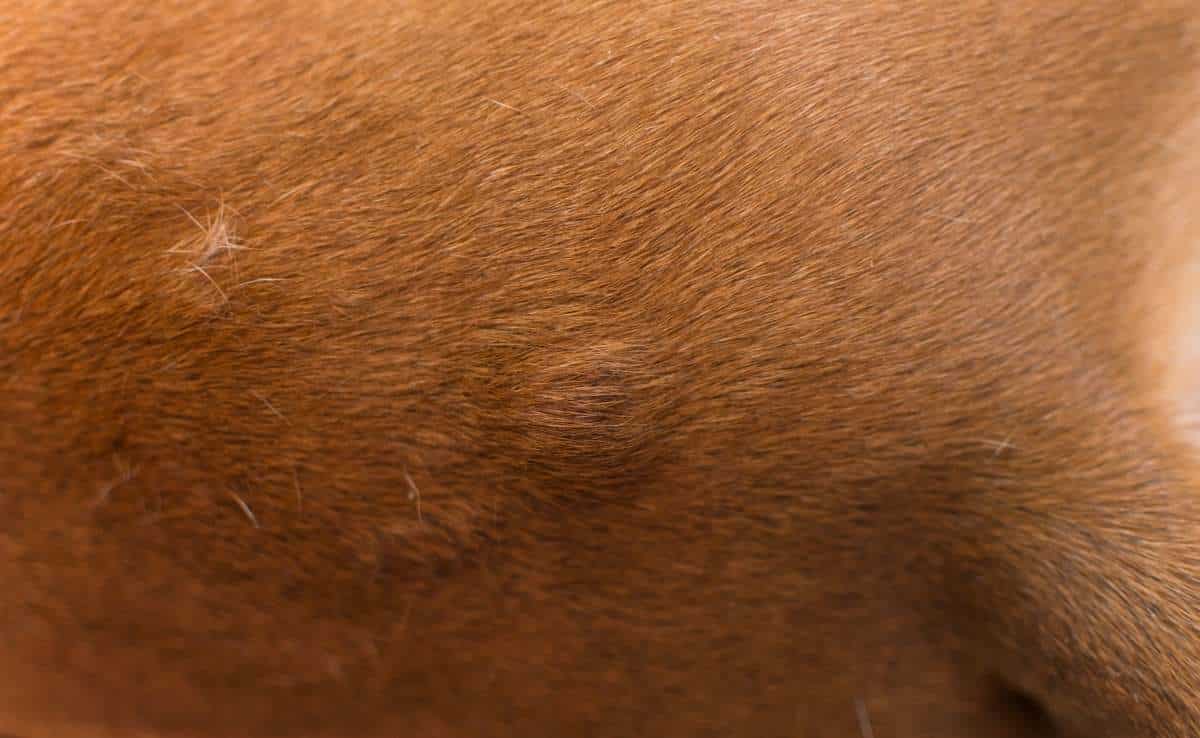
Do Monthly Lump Checks
Just like people check their own skin for changes, pet parents should do a monthly full-body scan on their dogs. Look in these high-risk spots:
- Inside the mouth and under the tongue
- Between the toes and around the nails
- Around the eyes and eyelids
- Along the belly, back, and legs
Note anything new, irregular, bleeding, or fast-growing. Take pictures to track changes over time.
Brush Their Teeth & Inspect The Gums
Oral melanomas are aggressive—and often go undetected. Incorporating a teeth-brushing routine gives you an excuse to check the gums, tongue, lips, and roof of the mouth for any dark patches or masses.
If you notice any of the following, book a vet appointment immediately:
- Bad breath that doesn’t improve
- Black or pink bumps on the gums
- Bleeding from the mouth
- Reluctance to chew or eat
Trim Nails Regularly & Inspect Toes
Melanomas of the nail bed can mimic infections or injuries. Trimming your dog’s nails allows you to inspect:
- Nail color or texture changes
- Swelling at the base of the nail
- Tenderness or limping
- Nails falling off without explanation
If any of these signs persist, especially in a senior dog, don’t assume it’s minor.
Feed A Nutrient-Rich, Anti-Inflammatory Diet
While no diet can “cure” or definitively prevent melanoma, a high-quality, antioxidant-rich diet can support your dog’s immune system. A stronger immune response may help the body recognize and fight abnormal cell growth earlier.
Look for foods that include:
- Omega-3 fatty acids (from fish, algae, or flaxseed)
- Vitamin E and selenium
- Natural anti-inflammatories like turmeric or ginger (approved by your vet)
View our list of the 10 best superfoods for dogs and the best superfood dog brands that include nutrient-rich, anti-inflammatory ingredients.
Reduce Environmental Risk Factors
Avoid known toxins and potential carcinogens like:
- Air fresheners and scented plug-ins
- Excessive sun exposure (especially for short-haired or light-skinned dogs)
- Pesticide-treated grass
- Secondhand smoke
Not All Lumps Are Melanoma: What Else Could It Be?
Melanoma shares symptoms with several other skin and mouth conditions. Common mimics include:
- Papillomas: Viral warts in younger dogs—typically harmless
- Sebaceous cysts: Oil-filled glands that look like skin bumps
- Mast cell tumors: Can appear like benign growths, but may be malignant
- Pyogenic granulomas: Inflammatory masses caused by trauma or infection
Only a biopsy can tell the difference. Never assume a lump is safe just because it isn’t growing—or because your dog isn’t in pain.
Frequently Asked Questions
If you’re feeling overwhelmed, you’re not alone. Melanoma in dogs raises a lot of questions—especially when you’re facing it for the first time. From spotting early signs to understanding treatment options and survival odds, pet parents deserve clear, compassionate answers.
Below are the most common questions veterinarians hear from concerned dog owners—and what you need to know right now. Don’t see yours? Ask us in the comments, and we’ll give you an answer.
Can Dogs Survive Melanoma?
Yes—especially if diagnosed early and treated aggressively. Skin melanomas are often benign. Oral and nail bed melanomas are more dangerous but treatable with surgery and immunotherapy.
How Fast Does Melanoma Spread In Dogs?
Very fast. Oral and digital melanomas often metastasize before symptoms appear. Time is critical.
Is Melanoma In Dogs Painful?
It can be. Pain results from tumor pressure, ulceration, or nerve involvement. Signs include limping, drooling, or loss of appetite.
What Does Melanoma Look Like On A Dog?
It can look like a dark mole, a swollen toe, a bleeding gum lump, or an oddly shaped skin tag. Some tumors are pink or unpigmented—making them harder to recognize.
Is Melanoma Contagious To Other Dogs Or People?
No. It is not infectious or transmissible.
Can Melanoma In Dogs Be Misdiagnosed?
Yes. It’s easily mistaken for warts, cysts, or infected nails. A biopsy is the only definitive way to diagnose melanoma.
How Much Does Melanoma Treatment Cost?
Depending on the treatment plan, it may cost $500 to over $10,000. Pet insurance can dramatically ease this burden if purchased before the condition occurs.
Be Your Dog’s First Line Of Defense
Melanoma in dogs is fast, aggressive, and often silent—until it’s not. But you’re not powerless. Make monthly checks part of your routine. Get suspicious lumps tested. Talk to your vet about pet insurance before you need it.
Not all skin growths are cancerous—but that doesn’t mean they should be ignored. Learn how to tell the difference between harmless lumps, sebaceous cysts, and benign skin tags—and when it’s time to call your vet. Your dog can’t tell you what’s wrong—but you can learn what to look for.
Why Trust Canine Journal?
Sally has over 20 years of experience in human health sciences communications, including 10 years as an expert on pet health conditions and treatment. She’s part of a team of dedicated canine professionals and long-time dog owners at Canine Journal. We test and research the best pet products, not only for our own pups but for all of our readers.



